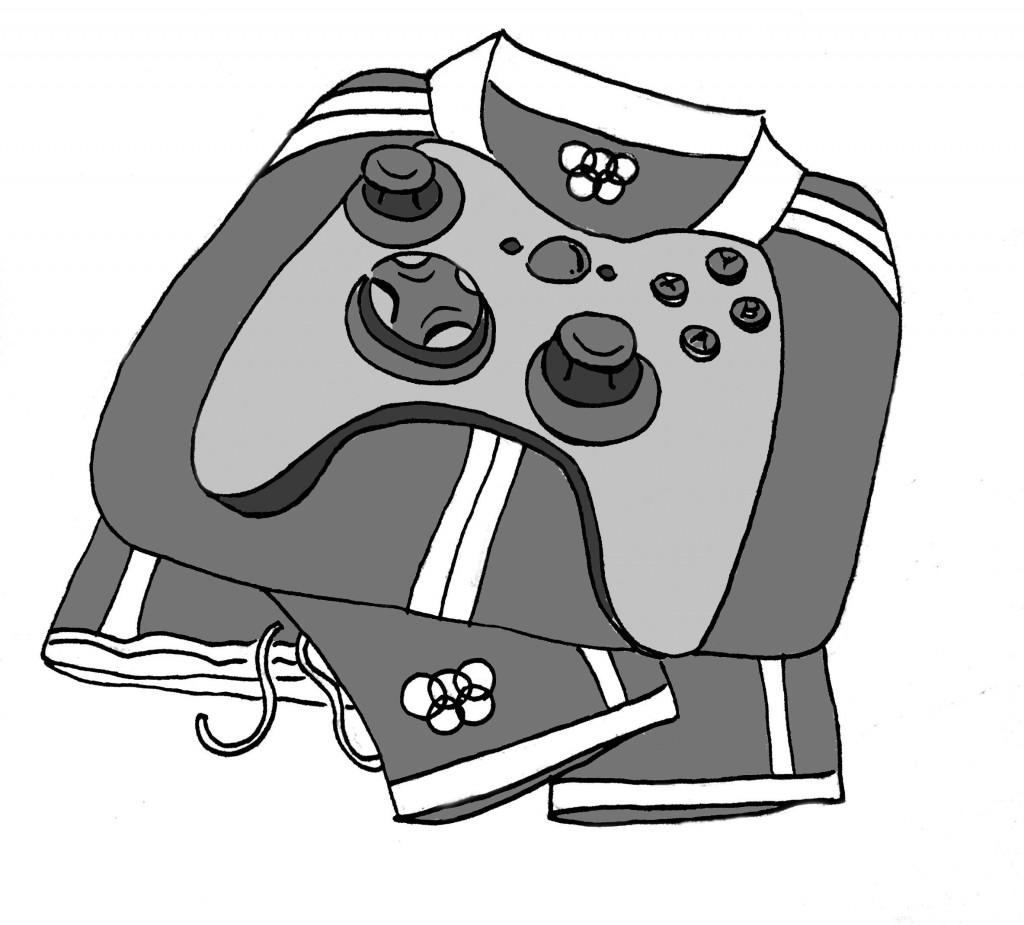Twelve feet wide, five feet tall, and nine feet deep. The Nimrod computer cast a looming presence at the Festival of Britain in 1951. Nimrod was the first computer designed specifically for playing video games—in this case, the mathematical strategy game Nim.
In Nim’s traditional set-up, two players take turns removing matches from three separate heaps. The winner removes the last object. Compared to the fast pace of first person shooter games—like Call of Duty, and sports simulations, like NHL and FIFA—Nim seems simple. Yet despite its slower game play, Nimrod was an instant sensation at the time.
“Most of the public were quite happy to gawk at the flashing lights and be impressed,” said John Bennett, an Australian employee of Ferranti Nimrod, according to Wired.
It would be another 40 years before the first PlayStation console was released and children would come to eagerly await video games for their birthdays. However, few could have predicted the shift in game-playing culture that Nimrod ultimately helped inspire.
“Video games are definitely leaning towards multiplayer now more than in the past,” explained Brendan Cordeiro, a U3 microbiology and immunology honours student. “Nowadays, the main selling point of a video game is the multiplayer aspect; in fact, some of the most lucrative games out now don’t even have a single player component and can only be played online. There is just something really cool about playing with different people across the world and making them really mad when you beat them.”
As the Internet rose in prevalence during the beginning of the 21st century, video games developed a larger online presence. According to a state of the industry report by Netherlands-based company Spil Games, more than 1.2 billion people currently play video games around the world—700 million of whom are playing their games online.
This expansion of online gaming has created an entirely distinct culture. Characterized by the emergence of online gaming communities, children and adults alike now connect through the internet to engage in both competition and camaraderie.
Perhaps the most notorious example of this online culture is Felix Arvid Ulf Kjellberg’s, better known as PewDiePie, who runs a video gaming YouTube channel. Since Aug. 15, 2013, PewDiePie’s channel has 33,641,251 YouTube subscribers, where viewers may watch Kjellberg’s commentary as he plays horror and action video games.
“They’re entertaining,” said Steven Cooper, a U3 mathematics major. “It’s fun to play vicariously through someone else. “More formally known as a ‘Let’s Play (LP),’ PewDiePie’s channel is one of millions of YouTube videos depicting someone playing a video game while commentating. While initially directed towards an older audience, these videos have trickled down to elementary school children. My own brother’s grade 4 class consists of several students that actively watch and contribute to LP videos online—my brother included.
Compared to the ’90s, where children gathered in their homes to play games together, the evolution of online gaming has changed the scope of these activities. Since gamers can now interact with any number of gamers from across the globe—when people do meet in person to play games, they often meet by the thousands.
Major League Gaming (MLG), an electronic sports organization and the world’s largest competitive video game league, hosts and broadcasts gaming competitions for a variety of popular games, including League of Legends, Mortal Kombat, and Super Smash Bros. Most recently, over 21,000 gamers attended the 2014 Call of Duty Championships in Anaheim, while tens of thousands of viewers consistently stream these events.
The winners of the competition, a group known as ‘Evil Geniuses,’ walked home with $25,000 in prize money—a small portion of the hundreds of thousands of dollars won by professional gamers each year. Considering the hype and sportsmanship qualities now attributed to video gaming, perhaps it is no surprise that colleges in the U.S. are starting to recruit gamers to their programs with hefty video gaming scholarships.
Spearheading this movement is the Robert Morris Illinois University, which created an official video game team this past fall to compete in video game leagues. Thirty-five students received athletic scholarships under the school’s new e-sports program, which covers top-of-the-line game training facilities, and 50 per cent of their tuition, room, and board. Several other American schools, including Kentucky University, have expressed interest in following suit.
This movement parallels current efforts to lobby the International Olympics Committee (IOC) to add e-sports to the Olympics. While the IOC is reluctant to add new games to the event—supporters of chess have been unsuccessful for years—the rapid expansion of gaming from a living room pastime to an electronic sport have provided many gamers with optimism towards this possibility.
“I’m not [sure about] something like the Olympics, but I do think that video game competitions will grow to a more mainstream event,” Cordeiro said. “It used to be that video game competitions would be held in small auditoriums with 50 people watching a handful of players play for a $20 prize. Just two months ago, the world StarCraft championship, a strategy game on the computer, had a prize pool of $250 000, was held in a large convention hall, and was viewed by millions across the world online. So I do think it will eventually be the sort of thing you would see on TV one day, [even if its] not like the NHL.”









